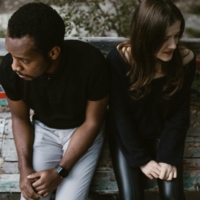“Falling” vs. staying in love
In her article “To Fall in Love With Anyone, Do This,” author Mandy Len Catron refers to a study by psychologist Arthur Aron that examines whether intimacy between two strangers can be accelerated by having them ask each other a specific series of personal questions. The 36 questions in the study are broken up into three sets, with each set designed to be more probing and intimate than the previous one.
Catron discovered that we can fall in love with anyone, by asking them just 36 questions. Sounds too good to be true, right? Yet Catron differentiates between merely falling in love and staying in love. Falling in love, or to be excited about someone, is different than staying in love, landing slowly with another being. At the end of her article she talks about choice—a conscious, daily choice we have to make in order to stay in love. The choice we make to commit.
Falling in love is the easy part: bright colors with fireworks. Choosing to love someone, however, is a more complex process. Vulnerable and risky, love requires you to take a leap of faith and make the effort to commit to yourself and to your romantic mate, every day.
The 3 essentials of landing in love
There are three main elements that are part of the process of finding love.
The first is to get to know each other, in depth.
It’s a mutual process whereby both people get to know each other while being witnessed by the other. Slowly deepening and tightening your bond, it includes mirroring and making validating, honest reflections to one another. Slowly, you learn to appreciate the good in your partner and tolerate their less desirable qualities.
The second element is acceptance.
Acceptance of the other person with their complexity and edge, acceptance of ourselves in the relationship, and even more so, acceptance of the idea that you truly deserve to have a good, safe, and reciprocal love.
The third element is to “let go and let in”.
In other words, to start the process of trusting and committing to work together and choose to have love. It means sharing and including with your partner your fears and hopes, while taking a deeper look at your patterns, familiar behaviors, and feelings that usually show up when things get more serious, intimate, and available with a potential fit.
It’s important to note that the last two elements are terrifying processes. To take a leap and accept that you deserve to have safe love and to let go of fears in order to let someone else in is frightening, but possible.
Some ideas to implement the three elements at home:
1. Witness and be witnessed.
Try once a week to have some quiet, peaceful time where you face each other and mirror a few things you appreciate in your partner (a trait you really like, such as a nonverbal expression you find touching, their style, their opinions, skills, beauty, etc.), then shift turns.
2. Practice acceptance.
When you see something in your partner that is harder for you to accept or that you don’t like, take a moment, pause, and turn the mirror back at you. Look inside and check with yourself: what is it that you are scared of or can’t accept? Maybe it’s a place that feels very vulnerable or unknown for you. This is an invitation to take a deeper look inward and get to know yourself better.
3. Choose commitment.
You can turn this into a playful, intimate conversation where you each share, “What am I needing from you in order to feel safer?” You can do the same thing with yourself: “What am I needing from myself in order to feel open and available?” It can be things such as deeper listening, deeper questions, more physical touch, verbal reassurance, emotional support, etc.
“I have the chance to make the choice to love someone,” Catron summarized, “and the hope that he will choose to love me back, and it’s terrifying. But that’s the deal with love.” Keep this choice in mind as you make the transition from falling in love to landing in love.
Mor Gavish, MFT
Relationships are everywhere. We are constantly in relationship with one another, and it can be both exciting and challenging. Mor believes that these challenges can also be seen as gift. This can be a place where you and your partner can deepen your relationship to self and other and an opportunity for discovery, growth, closeness, and healing.

 Call Us Now
Call Us Now




